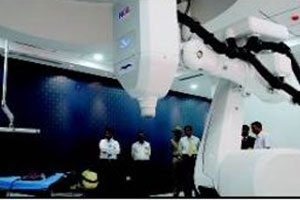India's Cancer Care Model Is Case Study at Harvard

Bangalore: HCG is treating almost 10 new patients everyday diagnosed with cancer to help them get rid of this fatal tumour in their system. The researchers at Harvard tried to get the information regarding no poor cancer patient being turned away at Central Bangalore hospital. Harvard Business School has taken up its cancer care model as a case study.
The study regarding the model with unique drug dispensing in published by researchers Regina Herzlinger, Amit Ghorawat, Meera Krishnan and Naiyya Saggi. Dr. Ajaikumar's expansion model which portrays Bangalore being the hub of high-end imaging, therapy, and complicated procedures at lower cost interested them the most. HCG has expanded over 20 centres using this model.
"The drug dispensing method to patients was also unique. The hospital set up pharmacies within its premises which lowered drug cost as it was procured directly from manufacturers. This helped low-income patients to benefit from well-tested generic drugs instead of costly imported drugs," the Harvard team said stating HCG a 'focused factory' as quoted by TOI.
The process HCG followed to evaluate the creation of a new spoke began with an environmental scan of the area, assessing cancer incidence, market size, availability of medical expertise, insurance, and competition, among other factors. In a remote area such as Shimoga which had few available options for cancer treatment, HCG decided to provide a wider range of services there than in other spokes.
The hospital collaborated with a local doctor who already had a practice but would upgrade existing facilities and provide some capital investment like radiation equipment, and typically retained 51 percent ownership.
Dr Ajai said, "This is because Indian patients almost always travel with their families to secure treatment. Travel cost and accommodation, especially in a nuclear family with one person earning, can become a huge burden for the family," as quoted by TOI. Telemedicine gave the spokes access to hub doctors.
Hubs in Bangalore, Delhi and Ahmedabad attracted patients from across India, Africa, Iran, Afghanistan, Germany, Australia, and the U.S., while the spokes in smaller cities attracted primarily local populations. While 60 percent of patients belonged to the middle class, 20 percent were below the poverty line and the rest 20 percent affluent. Researchers pointed out how the entire HCG team believed in a culture of compassion. According to the report, "As a policy, HCG did not turn away any patients even if the patient could not afford to pay.” In fact, employees chipped in with contributions to support patient care.

.jpg)
.jpg)
